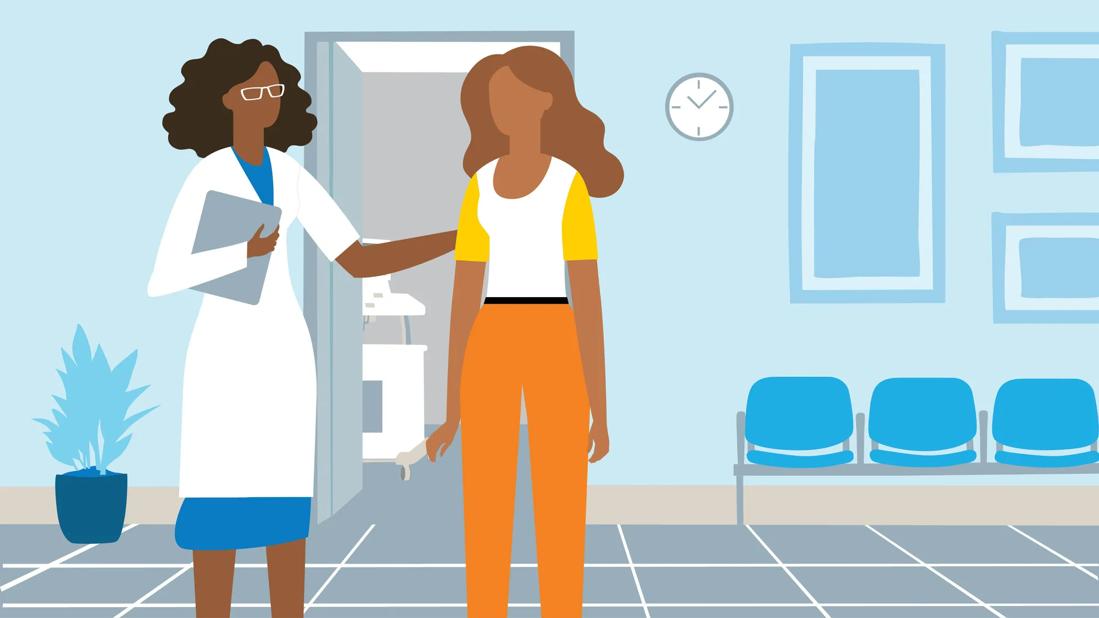Internists see people 18 and over, while family medicine physicians can treat people of all ages — but from there, they have more similarities than differences

When you’re looking for a primary care provider, it can be difficult to know where to turn. And when it comes to titles, how can you tell whether an internal medicine physician or a family medicine physician is best for you and your family?
Advertisement
Cleveland Clinic is a non-profit academic medical center. Advertising on our site helps support our mission. We do not endorse non-Cleveland Clinic products or services. Policy
Family medicine physician Amy Bernstein, DO, explains the differences — and the many similarities — between the two types of providers.
Both internal medicine doctors and family medicine doctors fall under the category of primary care providers. But three main factors set them apart from one another:
Let’s take a deeper look at the differences.
Whether you see a family medicine or internal medicine physician depends on your age.
For adults, this difference doesn’t necessarily matter. You can see either type of provider for your own care. But if you have kids (or hope to have them down the road), you may want to see a doctor who can treat the whole family.
On the other hand, having kids doesn’t mean everyone in your family has to see the same doctor. You could choose an internal medicine provider yourself and a pediatrician for your kids.
Both internal medicine and family medicine doctors go through four years of medical school and three years of residency training. But there are some differences in what they learn.
Advertisement
“In internal medicine, residency training is focused solely on adult medicine,” Dr. Bernstein explains. “In family medicine, residency includes training in pediatrics and in obstetrics, too, like delivering babies and learning about prenatal care.”
This is especially important for family medicine providers who go on to work in rural areas. If you live in or near a city, you may see an obstetrician during your pregnancy and delivery. But in rural areas, family medicine providers often work double duty, serving as both primary care providers and prenatal providers.
After residency, some doctors choose to pursue subspecialty training or additional years of fellowship focused on specific areas of medicine.
Internal medicine doctors can pursue extra training in areas like cardiology (heart), pulmonology (lungs) and dermatology (skin) — and they may then end up focusing their work on those subspecialties. Your cardiologist, for example, was first trained as an internal medicine doctor. Then, they went on to specialize in conditions related to the heart.
Family medicine doctors can complete subspecialty fellowships in areas like geriatrics, sports medicine and palliative care.
But both internal medicine and family medicine physicians can work as generalists, too — physicians with a broad range of knowledge and skills. These are the primary care providers you see for your general health needs.
“Any primary care physician who wants to pursue additional training in a subject matter can certainly do that, and that means that every physician is a little bit different in terms of their scope of practice within primary care,” Dr. Bernstein points out.
“But that has more to do with individual providers’ interests than with whether they’re family medicine doctors or internal medicine doctors.”
Despite these differences, internal medicine and family medicine doctors have plenty in common. As primary care providers, both can:
“For adults, there should be no true difference between seeing a family physician and seeing an internal medicine physician,” Dr. Bernstein clarifies. “Your primary care provider could be either type of doctor without you even knowing.”
So, which is better, internal medicine or family medicine? You’re not going to find an answer here — because there isn’t one.
When you’re trying to choose the right doctor for you, it all comes down to your preferences and needs.
Advertisement
“The main difference between the two types of doctors is the age range of the people they can treat,” Dr. Bernstein reiterates. “Your options will also depend on the resources available in your area.”
Beyond that, she says that everything else is individual. The most important thing is to pick a doctor you connect with and establish care with them. This means you see them for annual check-ups and throughout the year as needed.
“Even if you feel like you’re young and healthy, you should be established with a primary care doctor,” Dr. Bernstein urges. “Whether it’s internal medicine or family medicine, find someone whom you feel like you can form a relationship with — and make sure you check in with them at least once a year.”
Advertisement
Learn more about our editorial process.
Advertisement

Having a PCP means knowing where to go for a range of concerns — that’s a good thing for your lifelong health

Make your home a no-fly zone by cleaning your drains, refrigerating your produce and DIYing a fruit fly trap

If the area is bleeding a lot or the wound is near your face or genitals, you likely need a specialist’s care

Lots of things can activate the herpes simplex virus, from the common cold and cold weather to cracked skin and cosmetic procedures

Honey can help make a sore throat more bearable by tamping down inflammation and coating your throat

A combination of rest, fluids and over-the-counter medications can help you feel better fast

Changing how you breathe, gargling water and distracting yourself are all common ways to stop your diaphragm from spasming

CTs and MRIs use different technologies to show different things — neither is necessarily ‘better’ than the other

The ‘sunshine vitamin’ is found naturally in some fish and is added to other foods

Autism and ADHD often go hand in hand, giving rise to the term AuDHD

The Yuzpe regimen is less effective than other forms of emergency contraceptives, and it’s associated with more side effects